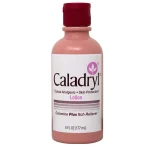Seasonal Changes and Vitamin D: A Year-Round Health Guide
Vitamin D, often called the “sunshine vitamin,” is a vital nutrient that supports bone health, immunity, and overall well-being. Its unique synthesis in the body depends heavily on sunlight exposure, making seasonal changes a key factor in determining levels. As seasons shift, so does the availability of sunlight, creating challenges for maintaining optimal vitamin D levels year-round. Explore the impact of seasonal changes on vitamin D levels and learn how to maintain optimal health year-round with practical tips and solutions. This article delves into the intricate relationship between seasonal variations and vitamin D, offering solutions to ensure health no matter the weather.
What is Vitamin D?
Vitamin D is a fat-soluble nutrient essential for calcium absorption, bone strength, and immune function. While it can be obtained from food sources, the body primarily produces vitamin D when the skin is exposed to sunlight. This unique dependence on environmental factors makes it susceptible to fluctuations caused by seasonal changes.
How the Body Produces Vitamin D
The skin synthesizes vitamin D when ultraviolet B (UVB) rays from sunlight interact with a cholesterol compound in the skin. This process is remarkably efficient during summer months when sunlight is abundant. However, factors like geographic location, skin tone, and time of year can influence the amount of vitamin D the body produces.
Seasonal Variations in Sunlight
As the earth orbits the sun, the angle of sunlight changes, altering its intensity and availability. In summer, sunlight is direct and plentiful, boosting vitamin D production. Conversely, winter brings shorter days, longer nights, and a tilted angle of sunlight, reducing UVB exposure significantly.
Geographic Impact on Vitamin D
Location plays a critical role in how seasons affect vitamin D levels. People living in northern latitudes, such as Canada or Scandinavia, experience prolonged winters with minimal sunlight. In contrast, equatorial regions enjoy more consistent sunlight year-round, reducing the risk of deficiency caused by seasonal changes.
Winter and Vitamin D Deficiency
Winter poses the highest risk for vitamin D deficiency due to:
- Reduced sunlight hours
- Heavy clothing covering most of the skin
- Increased time spent indoors
These factors make supplementation an essential strategy during colder months to prevent deficiency-related issues like weakened immunity and brittle bones.
Summer Sunlight and Vitamin D
Summer provides an excellent opportunity to replenish vitamin D stores. Just 10–15 minutes of sunlight exposure on bare skin a few times a week can significantly boost levels. However, excessive sun exposure should be avoided to reduce the risk of skin damage and cancer.
The Role of Skin Tone
Melanin, the pigment responsible for skin color, influences vitamin D synthesis. Individuals with darker skin require more sunlight to produce the same amount of vitamin D as those with lighter skin. This disparity becomes more pronounced during winter or in regions with limited sunlight.
Why Supplements Are Crucial in Winter
Supplements bridge the gap when natural sunlight is scarce. Vitamin D tablets, capsules, or drops provide a consistent source of the nutrient, ensuring the body remains equipped to support its functions. Healthcare providers often recommend supplements during winter to maintain optimal health.
Vitamin D and Immunity During Seasons
Research shows a strong link between seasonal vitamin D levels and immunity. Winter, characterized by low vitamin D levels, often coincides with an increase in respiratory infections, colds, and the flu. Maintaining adequate vitamin D levels can help bolster the immune system and reduce the severity of seasonal illnesses.
Best Times for Sun Exposure
To maximize vitamin D production, aim for midday sun exposure when UVB rays are strongest. In summer, as little as 10 minutes may suffice. During spring and fall, longer exposure is needed. In winter, relying on artificial sources or supplements becomes essential.
Dietary Sources of Vitamin D by Season
While sunlight is the primary source of vitamin D, diet can provide a valuable supplement. Seasonal foods include:
| Season | Vitamin D-Rich Foods |
|---|---|
| Winter | Fortified milk, mushrooms, egg yolks |
| Summer | Fresh salmon, mackerel, and sardines |
| Spring | Fortified cereals and yogurt |
| Fall | Cod liver oil and fortified juices |
Practical Tips for Maintaining Levels
- Incorporate vitamin D-rich foods into your daily meals.
- Spend time outdoors during sunlight hours, even in winter.
- Take a vitamin D supplement as advised by your healthcare provider.
- Monitor your levels through regular blood tests.
FAQs about Seasonal Vitamin D Deficiency
What is the best way to maintain vitamin D in winter?
Supplements and fortified foods are the most reliable options.
Can too much sun in summer lead to vitamin D toxicity?
No, the body regulates production, but prolonged sun exposure can damage the skin.
Do cloudy days affect vitamin D levels?
Yes, cloud cover reduces UVB rays, impacting vitamin D synthesis.
Is vitamin D necessary year-round?
Yes, consistent levels are vital for bone health and immunity regardless of the season.
How do I know if my levels are low?
Symptoms include fatigue, muscle weakness, and frequent illnesses. Consult a doctor for testing.
Can indoor UV lamps replace sunlight?
Yes, but they should be used under medical guidance to avoid risks.
Conclusion
Seasonal changes significantly impact vitamin D levels, but with awareness and proactive measures, maintaining year-round health is achievable. Whether through sunlight, diet, or supplements, ensuring consistent vitamin D intake supports immunity, strengthens bones, and enhances overall well-being. Embrace these strategies to navigate the seasons with confidence and vitality.











